|
|
|
Sort Order |
|
|
|
Items / Page
|
|
|
|
|
|
|
| Srl | Item |
| 1 |
ID:
164784
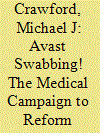

|
|
|
|
|
| Summary/Abstract |
Throughout the nineteenth century, U.S. Navy medical men, believing that airborne filth—miasmata—caused many of the diseases afflicting sailors and that humid air carries more filth than dry, sought to curtail the cleaning of the decks of warships with wet swabs. They met resistance to this reform from line officers who, from a variety of motives, were committed to keeping their ships clean. The medical reform movement attained its greatest intensity in the 1870s but quickly dissipated at the end of the century when steel hulls replaced wooden ones and the germ theory of disease replaced the theory of miasmata
|
|
|
|
|
|
|
|
|
|
|
|
|
|
|
|
| 2 |
ID:
138680


|
|
|
| 3 |
ID:
167475
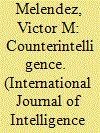

|
|
|
| 4 |
ID:
151360


|
|
|
|
|
| Summary/Abstract |
For this state-of-the-art surface-warfare concept to work, the U.S. Navy must recognize the leadership challenges it poses.
|
|
|
|
|
|
|
|
|
|
|
|
|
|
|
|
| 5 |
ID:
150308
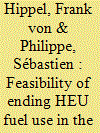

|
|
|
|
|
| Summary/Abstract |
Since September 11, 2001, the U.S. government has sought to remove weapons-useable highly enriched uranium (HEU) containing 20 percent or more uranium-235 from as many locations as possible because of concerns about the possibility of nuclear terrorism.
|
|
|
|
|
|
|
|
|
|
|
|
|
|
|
|
| 6 |
ID:
146881
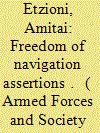

|
|
|
|
|
| Summary/Abstract |
In line with its “Freedom of Navigation” program, the United States conducts “operational assertions” by sending naval vessels to violate what it considers to be the excessive maritime claims of other states. Efforts have been made to legitimate this program to the public and elected officials on both liberal and realist grounds: Freedom of navigation is an important component of the liberal international order while also central to the exercise of U.S. naval power. However, it does not follow that military assertions, which create a security risk and are inconsistent with liberal principles, should take precedence over diplomatic and multilateral steps. Rather, the program has faced little scrutiny to date due to its relative obscurity.
|
|
|
|
|
|
|
|
|
|
|
|
|
|
|
|
| 7 |
ID:
176322


|
|
|
|
|
| Summary/Abstract |
Navy flight school is a challenging and rigorous undertaking designed for one purpose: to transform newly minted officers into professional and competent combat-quality military aviators. The U.S. Navy has been in the flight training business since 1911, when Lieutenant T. G. Ellyson effectively became Student Naval Aviator #1, training under aircraft builder and aviation pioneer Glenn Curtiss.1 Since then, the Naval Air Training Command has grown into one of the largest and most respected flight training programs in the world, producing more than 1,300 pilots and naval flight officers each year for the Navy, Marine Corps, Coast Guard and numerous partner nations.
|
|
|
|
|
|
|
|
|
|
|
|
|
|
|
|
| 8 |
ID:
151362


|
|
|
|
|
| Summary/Abstract |
One year ago, on 12 January 2016, Iran’s Revolutionary Guard Corps Navy captured ten U.S. Navy personnel (one officer and nine enlisted sailors) and seized two Navy riverine boats.
|
|
|
|
|
|
|
|
|
|
|
|
|
|
|
|
| 9 |
ID:
132550
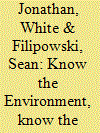

|
|
|
|
|
| Publication |
2014.
|
| Summary/Abstract |
Chief of Naval operations Admiral Jonathan Greenert has described the U.S. Navy as America' s away team. The sport reference reflects one of the CNO's main tenets: "Operated forwards". The goal is to ensure that our nation's conflicts are conducted in the backyards og our adversaries, not ours. We take the fight to them.
But any sport enthusiast knows about the home-field advantage, the benefits that accrue to the local team when playing in its own environment, which it knows better than the visiting team does. This applies in warfare as well. Taking the fight to the enemy risk giving him the home-field advantage.
|
|
|
|
|
|
|
|
|
|
|
|
|
|
|
|
| 10 |
ID:
146365


|
|
|
|
|
| Summary/Abstract |
The first operational definition of mentoring in organizations—offered by Kathy Kram in 1985—proposed that mentoring relationships facilitate an individual’s professional development through two distinct categories of “mentoring functions.”1 Career functions included sponsorship, exposure and visibility, coaching, protection, and provision of challenging assignments.
|
|
|
|
|
|
|
|
|
|
|
|
|
|
|
|
| 11 |
ID:
137974


|
|
|
|
|
| Summary/Abstract |
Dennis Blair was itching for a fight. In May 2009, the retired U.S. Navy admiral was serving as the director of national intelligence (DNI). Theoretically, Blair’s title gave him oversight of the CIA and Washington’s constellation of 16 other spy agencies. Yet, in reality, the director was powerless even to designate the senior American spy in a given country—a rank that, for decades, had traditionally been given to the CIA station chief in capitals from London to Beirut. Blair felt entitled to have charge over this. So sidestepping the White House, he sent a written order codifying that the DNI would now be the one to select the most senior spies. But there was one more important change: That person could be associated with any agency within the intelligence community. Though Blair said that the designee would almost always continue to be selected from the CIA, this didn’t sit well with the agency’s then director, Leon Panetta. He responded by shooting off a cable to all of the CIA’s overseas stations effectively telling them to ignore Blair’s memo completely.
|
|
|
|
|
|
|
|
|
|
|
|
|
|
|
|
| 12 |
ID:
170861
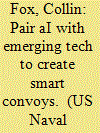

|
|
|
| 13 |
ID:
133065
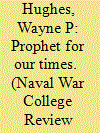

|
|
|
|
|
| Publication |
2014.
|
| Summary/Abstract |
It is appropriate for the Naval War College Review to reprint the superb essay by Admiral Ya'ari, because
the things he foresaw nearly twenty years ago are all coming to pass-an analytical performance worthy of any Old Testament prophet. The growing hazards and deadliness of the littoral seas are something all navies must take into account, but particularly the U.S. Navy, because it is only just beginning to grasp the uniqueness of the littoral environment, the need for new tactics, and the value of warships better suited to fight in its clutter. For example, with Professor Don Brutzman of the Naval Postgraduate School, I have reached the conclusion that the goal of "networkcentric warfare" (NCW) is appropriate only for operating an aircraft carrier battle group, an expeditionary strike group, or a surface action group, none of which can perform its function without radiating almost continuously. But NCW is ill suited for more numerous, distributable, smaller, and less expensive ships intended to fight in the demanding environment described by Admiral Ya'ari.
|
|
|
|
|
|
|
|
|
|
|
|
|
|
|
|
| 14 |
ID:
133386


|
|
|
|
|
| Publication |
2014.
|
| Summary/Abstract |
The author discusses his thoughts concerning his experiences as the first U.S. Army officer to hold the position of executive director/deputy commander of the U.S. National Naval Medical Center (NNMC). He compares and contrasts the culture of the U.S. Army and the U.S. Navy, particularly concerning operations on land and sea, the cooperation between U.S. Navy and U.S. Army staffs during the merger of national capital health-care, and deployments of U.S. military personnel from different military branches.
|
|
|
|
|
|
|
|
|
|
|
|
|
|
|
|
| 15 |
ID:
146441


|
|
|
|
|
| Summary/Abstract |
As the world’s only superpower, the United States of America finds itself challenged by adversaries who know they cannot confront it directly, toe to toe, on traditional battlefields, or on or under the world’s oceans. 1 In their attempts to follow Sun Tzu’s instruction to “subdue the enemy without fighting,” potential adversaries of the United States continuously assess and probe American strengths and weaknesses to identify vulnerabilities for military, political, and industrial exploitation. It is not fully appreciated, assessed, or addressed by American policy makers and warfighters how vulnerable the U.S. military is to the threat of “lawfare,” both international and domestic environmental.
|
|
|
|
|
|
|
|
|
|
|
|
|
|
|
|
| 16 |
ID:
179030


|
|
|
|
|
| Summary/Abstract |
For the first time in a generation, the US Navy finds itself in an era of great power competition. As US naval strategists and defense planners begin to organise materially and conceptually to confront the strategic and operational-level challenges posed by China and Russia, what should they keep in mind? What should frame their thinking? Absorbed with the day-to-day tasks associated with managing how the fleet is being built, operated, and rationalised, these busy officers and civilians seldom can step back and gain some perspective on fundamental aspects of the security environment and relate those to naval purpose. To that end, this article provides a primer on what to keep in mind and how to think in an era of maritime great power competition.
|
|
|
|
|
|
|
|
|
|
|
|
|
|
|
|
|
|
|
|
|